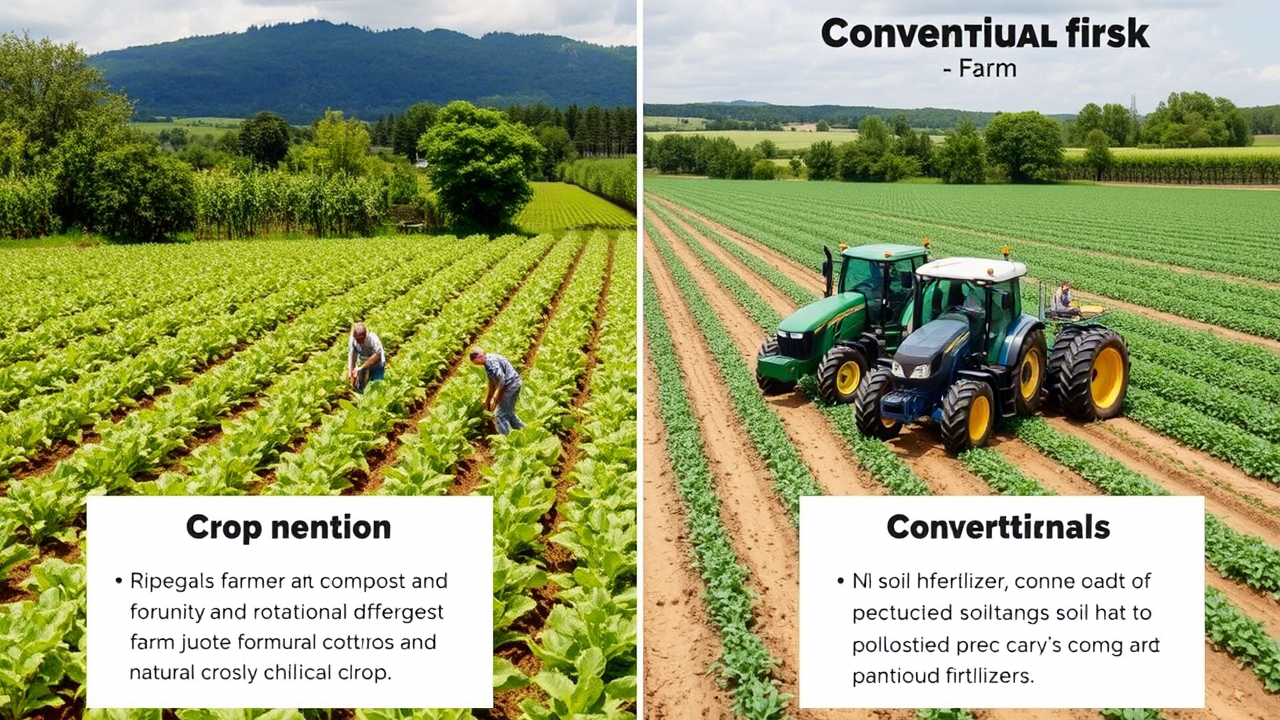Organic vs. Conventional Farming: Pros and Cons
In today’s world, where food production methods are constantly debated, the choice between organic and conventional farming remains a key topic. Both approaches have their merits and drawbacks, influencing health, the environment, and the economy. Understanding these differences can help consumers and farmers make informed decisions.

What Defines Organic and Conventional Farming?
Organic Farming relies on natural processes, avoiding synthetic pesticides, fertilizers, and genetically modified organisms (GMOs). It emphasizes soil health, crop rotation, and biological pest control.
Conventional Farming uses modern agricultural techniques, including synthetic chemicals, GMOs, and large-scale machinery to maximize efficiency and yield.
Pros and Cons of Organic Farming
Pros:
- Environmental Benefits
- Reduces pollution from synthetic pesticides and fertilizers.
- Promotes biodiversity and healthier soil through crop rotation and composting.
- Lowers carbon footprint by avoiding fossil fuel-based inputs.
- Health Considerations
- Minimizes exposure to chemical residues in food.
- Some studies suggest higher nutrient levels in certain organic produce.
- Animal Welfare
- Organic livestock farming typically provides better living conditions, with access to outdoor spaces and organic feed.
Cons:
- Higher Costs
- Organic food is often more expensive due to labor-intensive practices and lower yields.
- Certification and compliance add to production costs.
- Lower Yields
- Without synthetic aids, organic farms generally produce less per acre, raising concerns about feeding a growing population.
- Shorter Shelf Life
- Organic produce may spoil faster since it lacks preservatives.
Pros and Cons of Conventional Farming
Pros:
- Higher Efficiency & Lower Costs
- Synthetic fertilizers and pesticides boost yields, making food more affordable.
- Mechanization reduces labor costs.
- Greater Food Availability
- High production rates help meet global food demands.
- Longer shelf life due to preservatives reduces food waste.
- Technological Advancements
- GMOs and precision farming improve resistance to pests and diseases.
Cons:
- Environmental Impact
- Chemical runoff can pollute water sources and harm ecosystems.
- Soil degradation and loss of biodiversity due to monocropping.
- Health Concerns
- Pesticide residues on food may pose long-term health risks.
- Overuse of antibiotics in livestock contributes to antibiotic resistance.
- Sustainability Issues
- Heavy reliance on non-renewable resources (e.g., petroleum-based fertilizers).
Which One Should You Choose?
The decision between organic and conventional farming depends on priorities:
- Choose organic if you prioritize environmental sustainability, reduced chemical exposure, and animal welfare.
- Choose conventional if affordability, high yields, and food accessibility are more important to you.
A balanced approach—such as supporting regenerative agriculture or integrated pest management (IPM)—could combine the best of both worlds.
Final Thoughts
Neither organic nor conventional farming is perfect, but both play a role in global food systems. By understanding their differences, we can make choices that align with our values—whether for health, environmental impact, or economic feasibility.
What’s your preference—organic, conventional, or a mix of both? Share your thoughts in the comments!

